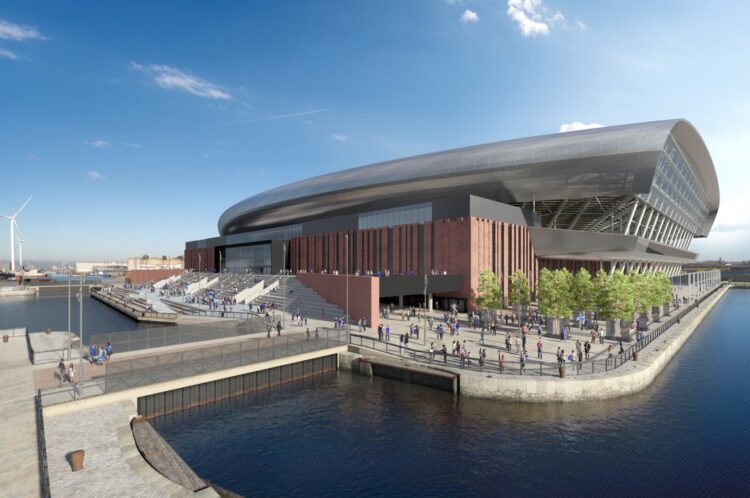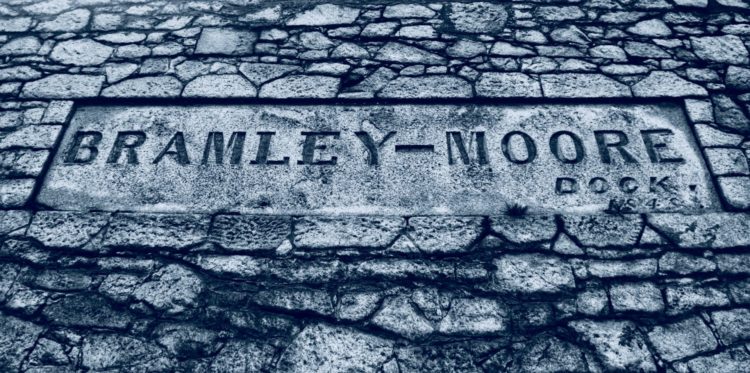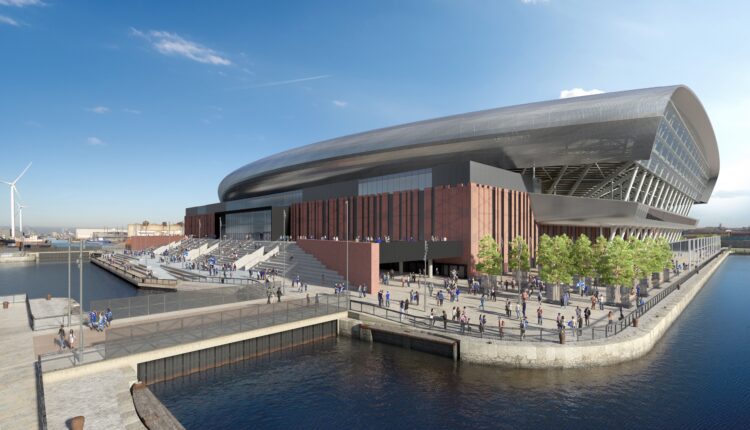Amended plans for Everton’s 52,888-capacity arena in Liverpool’s docklands have been submitted to Liverpool City Council – with Historic England determined to block the project. Tony McDonough reports

Everton FC has submitted an amended planning application for its proposed £500m arena to Liverpool City Council – as a heritage group attempts to block the project.
Amendments to the original design for the 52,888-capacity arena in Liverpool Waters were made after feedback from statutory consultees to the original planning application submitted in December 2019. Those consultees included Historic England.
However, despite the club willing to make changes, including lowering the height of the overall structure, Historic England is urging the Secretary of State to ‘call in’ the scheme and refuse permission for it to be built in its current form.
The main sticking point is the plan to infill the Grade II-listed Bramley Moore Dock. The intervention by Historic England has angered local businesses leaders with one describing the organisation as “Hysteric England”.
Everton’s plans for the stadium, which will sit within Peel L&P’s Liverpool Waters site and forms part of the city’s newly-launched North Shore vision, would have a transformational impact on North Liverpool.
A new stadium and a legacy project at Goodison Park will act as a catalyst for the regeneration of the city’s semi-derelict northern docklands, contributing a £1bn boost to the region’s economy, creating up to 15,000 jobs and attracting 1.5m visitors to the city each year.
The most visual of the design improvements is around the West Stand (the stand facing the River Mersey) with the introduction of a new stepped plaza and the removal of the multi-storey car park.
The changes will return symmetry to the building and will provide river views for supporters in the West Stand as well as creating an exciting new stepped terrace public space within an area of the World Heritage Site which is currently inaccessible to the local community and visitors alike.
The stepped terrace will also provide a new covered area to protect supporters entering the West Stand turnstiles and lounge entrances from any inclement weather. Solar panels originally proposed for the West Quay have been be relocated to the stadium roof, freeing up and decluttering the area for non-matchday use and providing parking for some of the Club’s disabled supporters.
The brick façade of the stadium has been simplified to make the tribute to the Archibald Leitch lattice work, that is so synonymous with Goodison Park, more obvious while the overall height of the stadium has been reduced so that it is defined as a ‘mid-rise’ building in line with Liverpool City Council’s World Heritage Site Supplementary Planning Document.

Colin Chong, Everton Stadium development director, said: “By working closely with Liverpool City Council and all our key stakeholders we have refined our plans to ensure a better connection between the stadium and the river.
“The public stepped plaza will become a high-quality start and end to the planned river walk and a destination benefitting the local community as well as visitors to the city on non-matchdays.
“This will be a transformational development for not just North Liverpool but for the Northern Powerhouse. If we are granted planning approval, this will be a world class football stadium in an iconic location and a key part of the city, city region, and the UK’s post-COVID-19 recovery plan.”
The next step is for Liverpool City Council to review and process the amended planning application before starting their formal public consultation period. Led by the council, the public consultation is a legal requirement that is anticipated to last 28 days and offers the public an opportunity to comment on the club’s amended planning application.
Due to the size of the application Liverpool City Council may need to convene a special planning committee meeting towards the end of the year to make its determination. Subject to planning approval as well as the finalising of funding, the club hopes that work could start on-site early in 2021.

